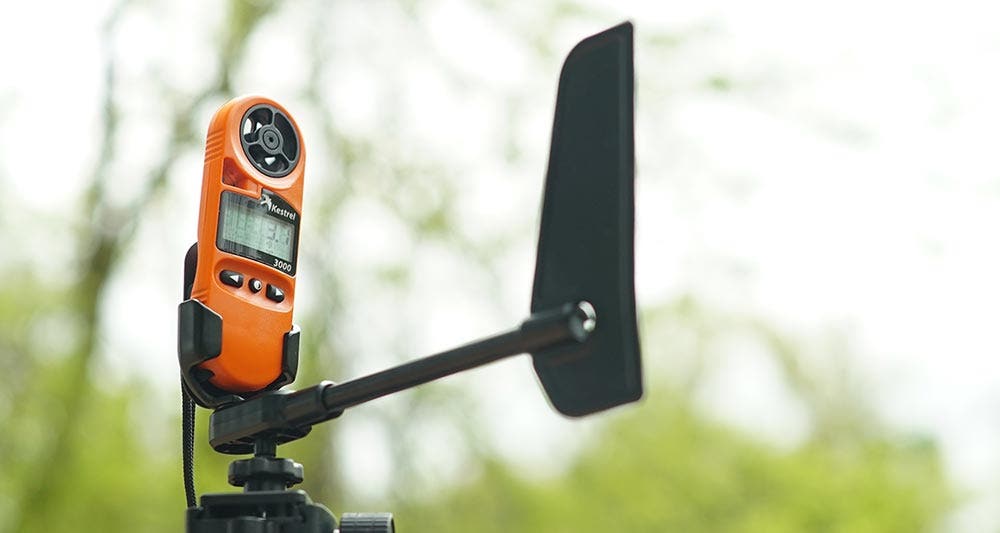Top 5 Helpful Hints for Accurate Kestrel Weather Meter Measurements

Whether you are a meteorologist, a professional who relies on weather data, or a hobbyist who loves weather watching, you expect Kestrel wind and weather meters to give you highly accurate local measurements. Kestrel weather meters rank as the most accurate portable monitoring solutions available.
However, there are several things to keep in mind to ensure that you're getting the most accurate measurements possible.
Tip #1: Keep Air Moving When Measuring Temperature
For accurate temperature measurements, the key is to keep the surrounding air moving over the device.
You'll want the Kestrel meter to catch the air as it blows by. You can simply wave it around if you aren't getting a breeze. This way, you can ensure the Kestrel is getting the actual temperature of the air and not the temperature of its case.

Tip #2: Watch Your Fingers
Accurate humidity measurements are essential for various applications, from indoor air quality monitoring to agricultural and environmental studies. However, taking accurate humidity readings can be challenging, as many factors can influence the readings. One critical factor to keep in mind is the impact of holding the meter when taking measurements. Avoid gripping it too tightly or covering the sensors with your fingers, as this can also affect the accuracy.
When you hold the meter, your body heat and moisture can raise the relative humidity by 5% or more, leading to inaccurate readings. To avoid this issue, it's best to use a vane mount or another type of device that can isolate the meter from outside influences of humidity. By using a vane mount or another mounting device, you can ensure that your humidity readings are as accurate as possible and avoid any errors caused by holding the meter.
Tip #3: Allow Kestrel Sensors to Stabilize
Another helpful hint is allowing Kestrel's sensors to stabilize. First, it's important to let the Kestrel meter acclimate to the environment before taking a measurement, which can take several minutes. For example, if your Kestrel meter was sitting in the trunk of a hot vehicle or stowed away in a cool basement and then taken to an outdoor location for readings, this would affect the measurement accuracy. This is especially important when bringing the device into a new environment. It can take 15 minutes or more for values such as temperature and humidity to stabilize, with humidity typically taking the longest.
Watch this video to learn tips for taking accurate measurements with the Kestrel 5400.
Tip #4: Keep the Humidity Sensor Dry
When it comes to measuring humidity, it's important to keep the sensor dry. A wet sensor will affect the accuracy of a humidity reading.
If the sensor comes in contact with water, shake it until no drops come out of the device and allow it to dry completely. If your Kestrel unit comes in contact with salt water, it will need to be rinsed with clean water and allowed to dry.
Tip #5: Use the Wind Vane Mount for Measuring Wind Speed
There are countless factors that can affect wind speed measurement, ranging from buildings and even your own body. Even if you plan to measure wind speed in an open field, it matters where you position the Kestrel meter for the best results.
It's advised to use a Kestrel vane mount affixed to a tripod for measuring wind speed. This will put the device at the appropriate height. Remember that holding the device off-axis can reduce its accuracy by 1% to 3%.
More Helpful Hints for Using Kestrel
Kestrel Instruments has a catalog of options for measurement devices from data loggers to comprehensive weather meters. In fact, did you know that Kestrel Instruments now has an all-in-one weather station to its line of accurate environmental monitoring solutions? The KestrelMet 6000 Weather Station is rugged, reliable, and ideal for providing a comprehensive range of weather measurements.
For more answers to your questions, check out our support page to get the most out of your Kestrel meter. If you have specific questions or need more assistance, don't hesitate to contact us.





